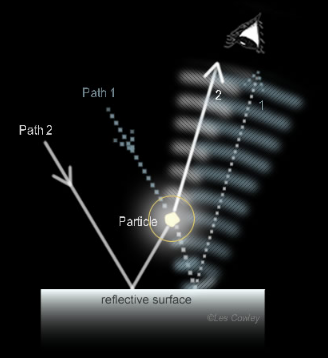Quetelet colours in a ditch
Quetelet Colours in a Ditch: Unveiling the Hidden Optical Effects
Have you ever noticed a mesmerizing display of iridescent colors on still water, whether it be in a roadside ditch or a stagnant pond? These captivating optical effects, known as Quetelet colours, can turn an ordinary scene into a stunning visual spectacle. Named after Adolphe Quetelet, a renowned figure in statistics and sociology, Quetelet scattering is responsible for this phenomenon. In this article, we will delve into the fascinating world of Quetelet colours, exploring the science behind their formation and uncovering the hidden beauty that lies within even the most unexpected places.
To understand how Quetelet colours come to life, we must first examine the role of small particles resting on or slightly elevated from the water's surface. Imagine a beam of light waves reaching one of these particles, following two distinct paths.
- Path 1: The waves directly reach the particle, which scatters them predominantly forwards. These scattered waves then reflect off the water's surface and travel upwards toward our eyes.
- Path 2: The waves first reflect from the water's surface and then reach the particle, which scatters them forwards in a similar manner.
The two wave trains from these different paths interfere with each other, resulting in the emergence of vibrant colors. This interference phenomenon is responsible for the enchanting Quetelet colours we observe.
Interestingly, Quetelet colours can also be observed on windows during long dry spells when dust accumulates. By refraining from cleaning windows for an extended period, one can witness the formation of beautiful Quetelet colours and interference fringes. It is truly remarkable how something as mundane as dust particles can transform into a source of visual delight.
Now that we have explored the basic principles behind Quetelet colours, let us take a closer look at their characteristics and potential variations:
-
Colorful Displays: Quetelet colours can manifest in a range of hues, including vibrant blues, greens, and purples. The specific colors observed depend on various factors such as the size and composition of the particles, the angle of observation, and the characteristics of the incident light.
-
Environmental Influences: The presence of algae, pollen, or dust on the water's surface plays a crucial role in the formation of Quetelet colours. These particles act as scattering agents, redirecting and interfering with the incident light waves.
-
Angle of Observation: The angle at which we view the Quetelet colours affects their appearance. By changing our viewing angle, we can witness different color patterns and intensities, further enhancing the visual spectacle.
-
Interference Fringes: In addition to the vibrant colors, interference fringes may also be visible within the Quetelet colour patterns. These fringes appear as alternating bright and dark bands, adding an extra layer of complexity and beauty to the optical display.
As we explore the world around us, it is essential to appreciate the hidden wonders that exist even in the most unexpected places. Quetelet colours serve as a reminder that nature constantly surprises us with its intricate and captivating phenomena. So next time you stumble upon a roadside ditch or a still body of water, take a moment to observe the mesmerizing Quetelet colours that dance upon its surface. You might just discover a hidden gem in the most unlikely of locations.
Please note that this article has been automatically converted from the old website and may not appear as intended. To view the original article, you can visit here.
References:

Qu�telet ColourstopticsAHighlightsAtoptics Highlights - Optics Picture of the Day - OPOD - Atmospheric Optics Spotted by Steve Mattan while driving one morning. Optical effects abound – even in a roadside ditch.
Image ©Steve Mattan, shown with permission

Iridescent colours on still water dusted with algae, pollen.. ..or dust. Quételet scattering, named after Adolphe Quételet, more known for his statistics and sociology, is responsible.
We need small particles resting on, or slightly elevated from, the water surface. Now imagine light waves reaching one of them – let’s call it by path 1 as at right. The particle scatters the waves predominantly forwards. They reflect off the surface and direct upwards towards the eye.
There is another route for waves. Path 2. Waves first reflect from the surface then reach the particle. They scatter forwards – again towards the eye.
The two wave trains interfere to give the colours.
Try not cleaning windows during a long dry spell. Their dust will give beautiful Quételet colours and interference fringes.
Note: this article has been automatically converted from the old site and may not appear as intended. You can find the original article here.
Reference Atmospheric Optics
If you use any of the definitions, information, or data presented on Atmospheric Optics, please copy the link or reference below to properly credit us as the reference source. Thank you!
-
<a href="https://atoptics.co.uk/blog/quetelet-colours-in-a-ditch/">Quetelet colours in a ditch </a>
-
"Quetelet colours in a ditch ". Atmospheric Optics. Accessed on November 26, 2024. https://atoptics.co.uk/blog/quetelet-colours-in-a-ditch/.
-
"Quetelet colours in a ditch ". Atmospheric Optics, https://atoptics.co.uk/blog/quetelet-colours-in-a-ditch/. Accessed 26 November, 2024
-
Quetelet colours in a ditch . Atmospheric Optics. Retrieved from https://atoptics.co.uk/blog/quetelet-colours-in-a-ditch/.